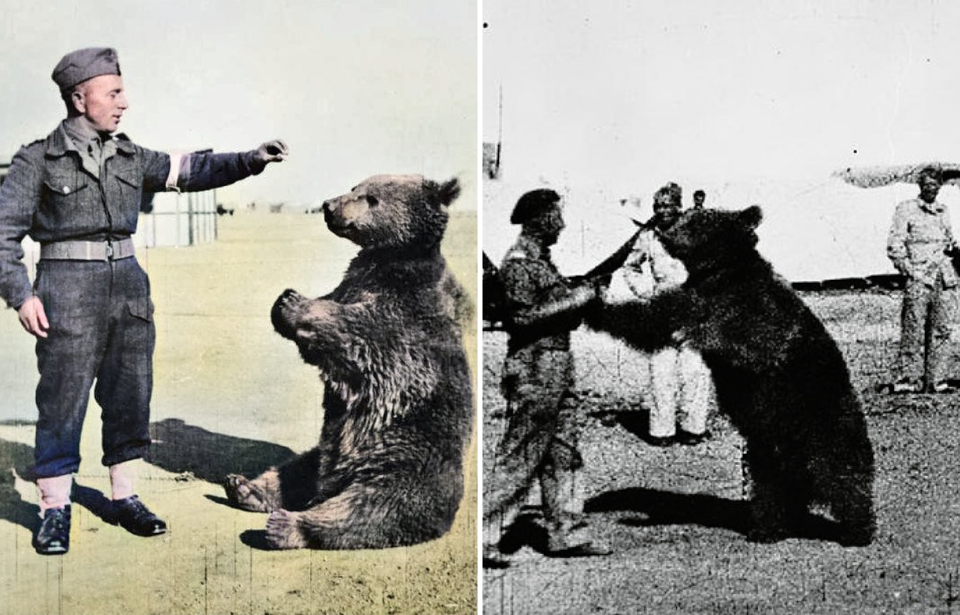Animal mascots were fairly common during World War II, but there are few military units who can say they served alongside a brown bear. It’s a rather unique claim to fame, but one the troops of Polish II Corps can boast about, thanks to their furry comrade, Wojtek.
A morale-boosting purchase
In the spring of 1942, the newly formed Anders’ Army left the Soviet Union after being released from a Siberian gulag and traveled to Iran, accompanied by thousands of Polish civilians who had been deported to Russia following the Soviet invasion of eastern Poland.
On April 8, the Polish soldiers encountered a young boy at a railroad station in Hamadan, Iran. He had in his possession a Syrian brown bear cub whose mother had been killed by hunters. One of the civilian refugees, 18-year-old Irena Bokiewicz, grew attached to the creature and prompted Lieutenant Anatol Tarnoweickl to buy it. The bear was purchased for some Persian coins, a Swiss Army knife, a tin of beef and a portion of chocolate.
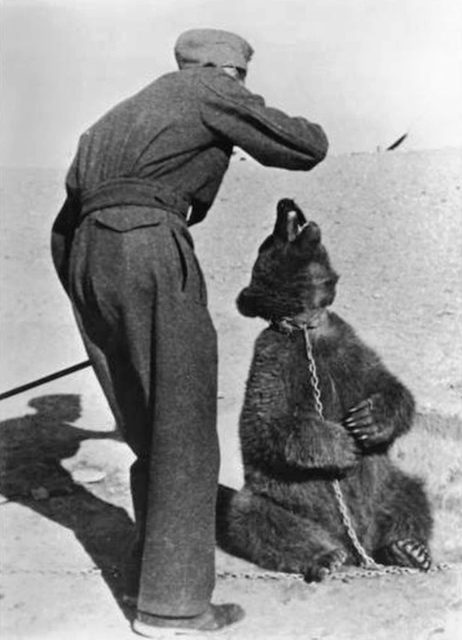
The bear cub spent the next three months in a Polish refugee camp that had been set up near Tehran, under the principal care of Irena. He is said to have caused trouble, eating any food that was lying around and allegedly stealing an entire clothesline of ladies’ underwear.
A bear just like any other soldier
The bear was donated to the Polish 2nd Transport Company – later called the 22nd Artillery Support Company – and named Wojtek. While with the unit, he traveled across the Middle East, moving from Iraq into Syria, Palestine and finally Egypt.
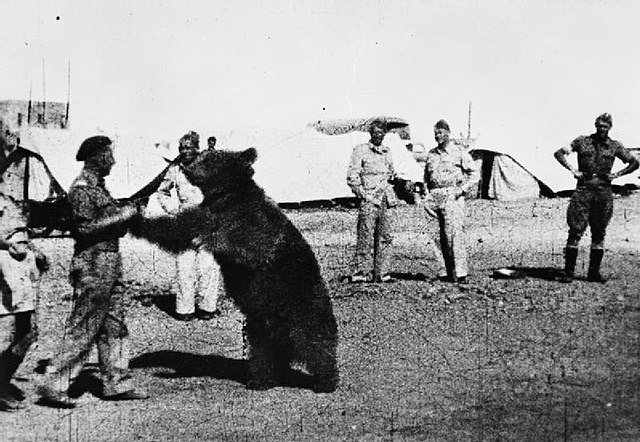
Wojtek initially had problems swallowing and thus was fed condensed milk from old vodka bottles covered with rags. As he grew, he was given marmalade, fruit, syrup and honey, and was often rewarded with beer, which fast became his favorite drink. Just like the soldiers around him, he started off his mornings drinking coffee, and he frequently smoked (and ate) cigarettes.
The Polish troops accepted Wojtek as one of their own. He slept with them on cold nights, and often participated in wrestling and soccer matches. He was taught to salute when greeted, chased the oranges the unit used during grenade training, and played pranks on the new recruits by holding them upside down and making them think he was going to eat them.
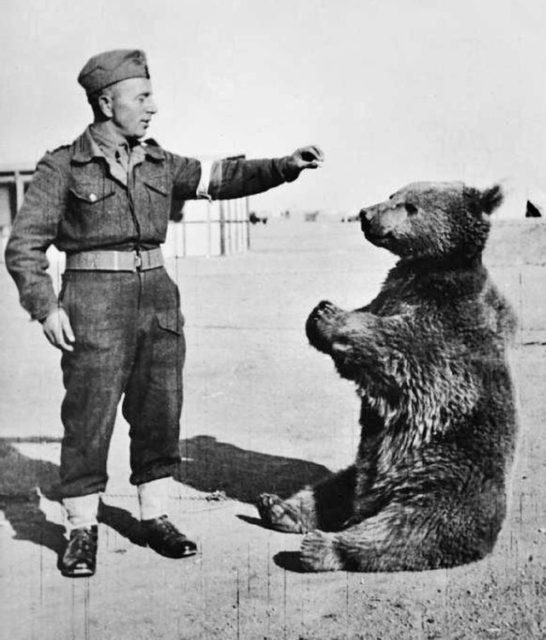
However, Wojtek didn’t think all the rules applied to him. During one Christmas, he snuck into the stores and ate the food, and he learned how to turn on the communal showers on his own, resulting in the odd water shortage.
He would eventually be named as the unofficial mascot of all the military units stationed nearby.
Hero of the Battle of Monte Cassino
After arriving in Egypt, the Polish II Corps was reassigned to fight alongside the British Eight Army during the Italian Campaign. However, British regulations forbade pets and animal mascots from boarding transport ships, meaning the Poles wouldn’t be able to bring Wojtek along.
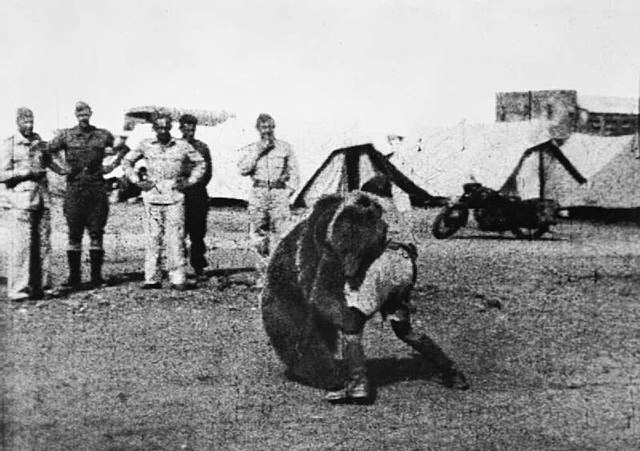
To bypass this policy, the II Corps enlisted him as a soldier in the 22nd Company and gave him the rank of private. His caretakers were Dymitr Szawlugo and Henryk Zacharewicz. As an enlisted soldier, he was given his own paybook and serial number and was allowed to live with the other troops in tents or in a special wooden crate.
Wojtek was present at the Battle of Monte Cassino in 1944, where he is credited with helping move crates of ammunition, an effort for which he was promoted to the rank of corporal. There are many who disregard this tale as fiction, but at least one account exists. A British soldier recalled seeing a bear mimicking the troops and it was able to lift boxes that would normally require four men.
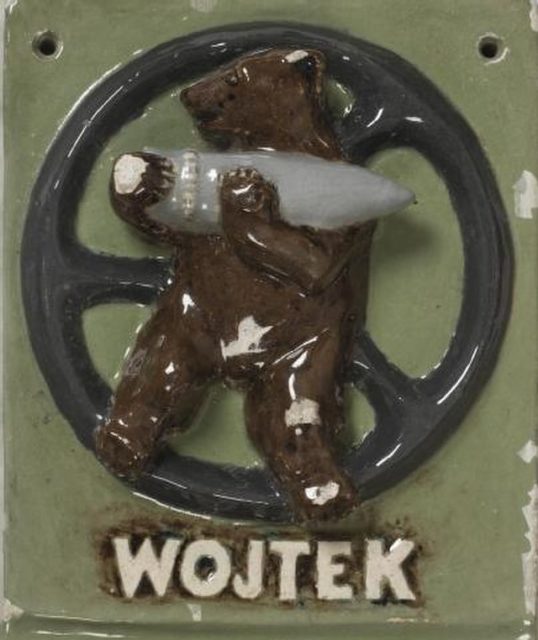
His actions in Italy made Wojtek a celebrity among the Allied forces. In recognition of his popularity, the 22nd Company made their official emblem an image of a bear carrying an artillery shell.
Post-war retirement
Not wanting Wojtek to be sent to Poland out of fear the Soviet-controlled government would make him a symbol of communism, his caretakers sent him to Scotland. He was transported to Berwickshire, along with the rest of the 22nd Company, and stationed with them at Winfield Airfield on Sunwick Farm, near the village of Hutton. He was popular with the locals and the press, and the Polish-Scottish Association made him an honorary member.
On November 15, 1947, following his demobilization, Wojtek was sent to live at the Edinburgh Zoo, where he lived out the remainder of his days. He was often visited by former Polish soldiers, who tossed cigarettes into his cage, and journalists.
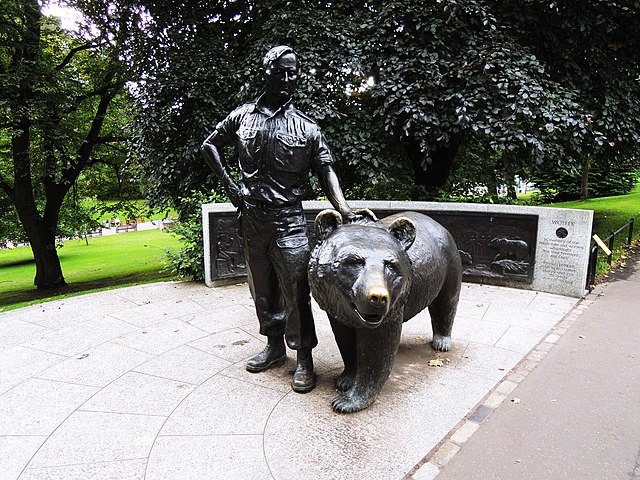
Wojtek died in December 1963 at the age of 21. The cause of death for the 500 kilogram, 1.8 meter-tall bear was partly attributed to damage to his esophagus, likely the result of his cigarette smoking during the war. In his memory, a bronze statue was unveiled in central Edinburgh in November 2015.
